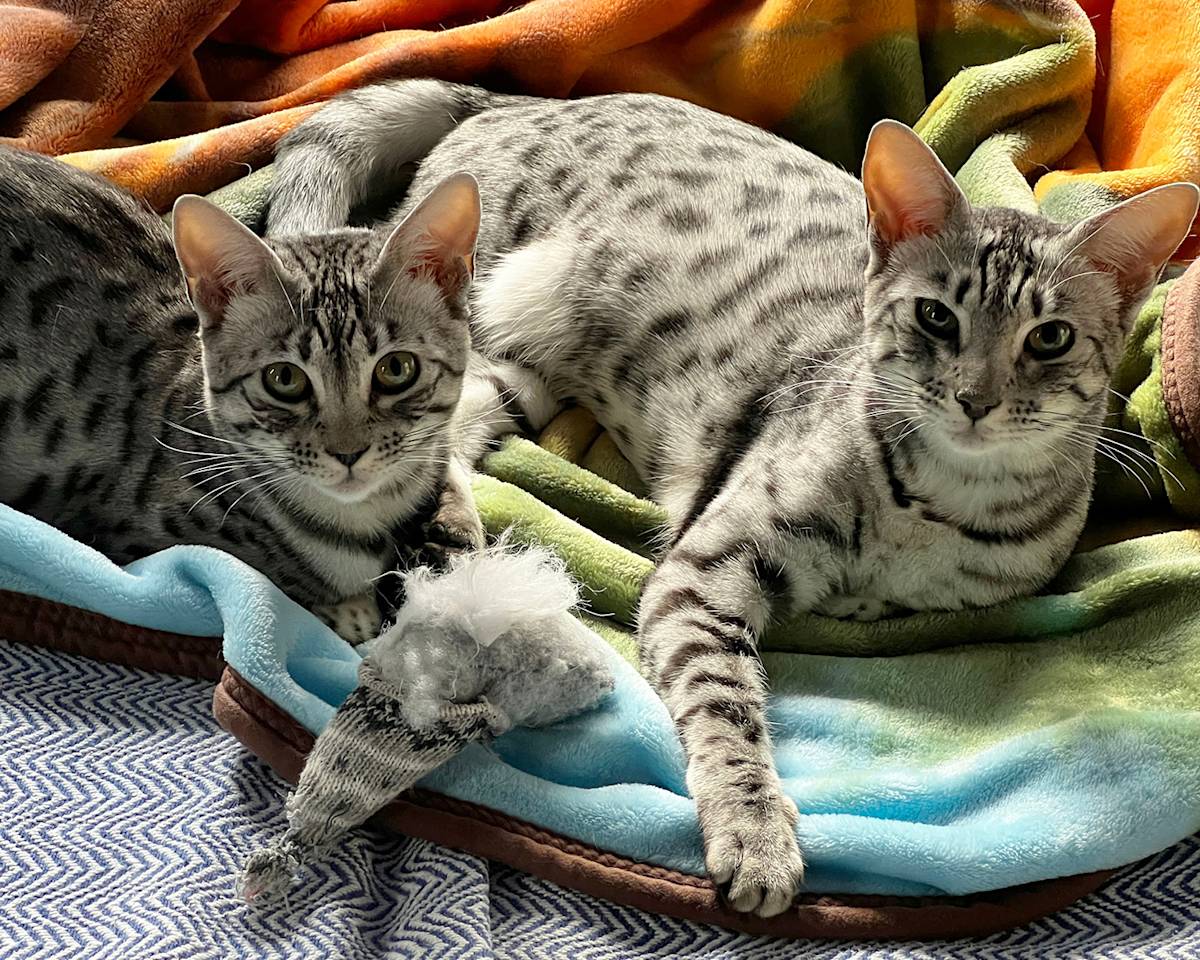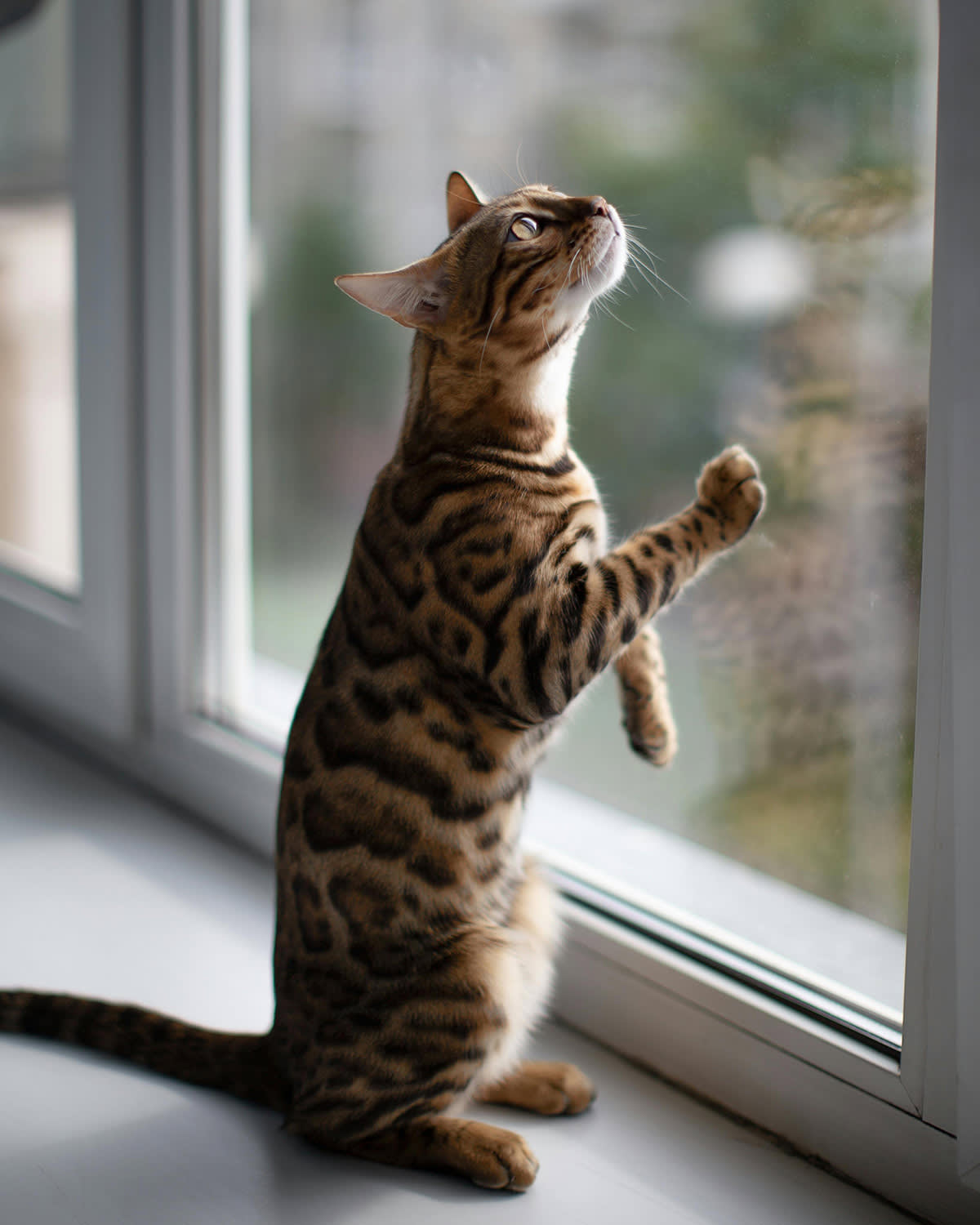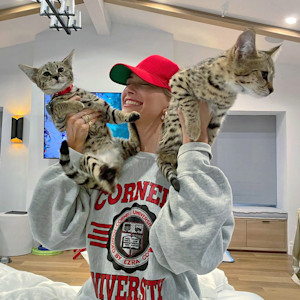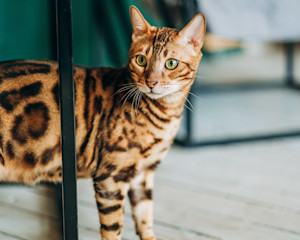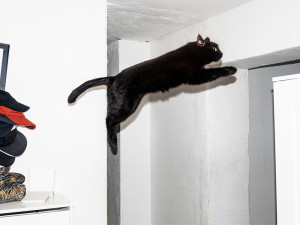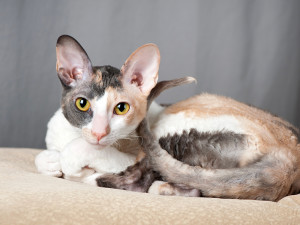Savannah Cat Vs Bengal Cat – What’s the Difference?
Which hybrid cat is which?
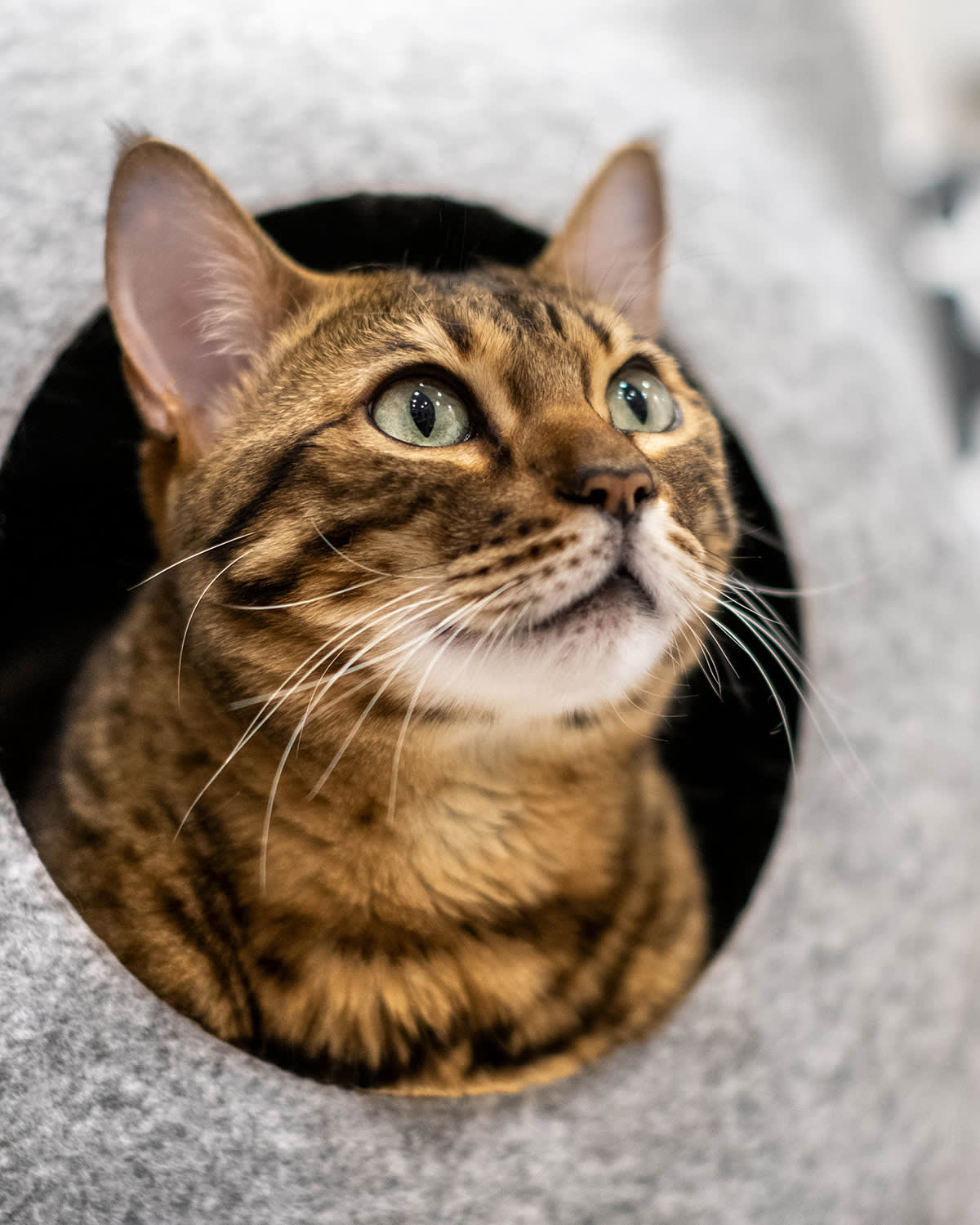
Share Article
In this article:
Are Bengals and Savannahs good pets? Differences between Savannah and Bengals Origin and histories Physical characteristics Temperament and behaviour Care and maintainance Ideal environments Exercise Cost Lifespan and health Are these cats right for you? FAQs
Both hybrid cats, both gorgeous, Savannah and Bengal cats may seem similar on paper but there‘s actually all kinds of differences between them. If you‘re considering getting either of these hybrid cats* then you need to do your research because while they might resemble your average kitty (kinda like how your average Kinship staffer resembles Bella Hadid), they are a lot closer to their wild ancestors and that can make them a lot of cat and not suitable for every household.
So, where to start? Well, figuring out the differences between Bengal and Savannah cats is a great jumping off point. Ahead, we take a look at the differences and similarities between the two most popular hybrid cat breeds.
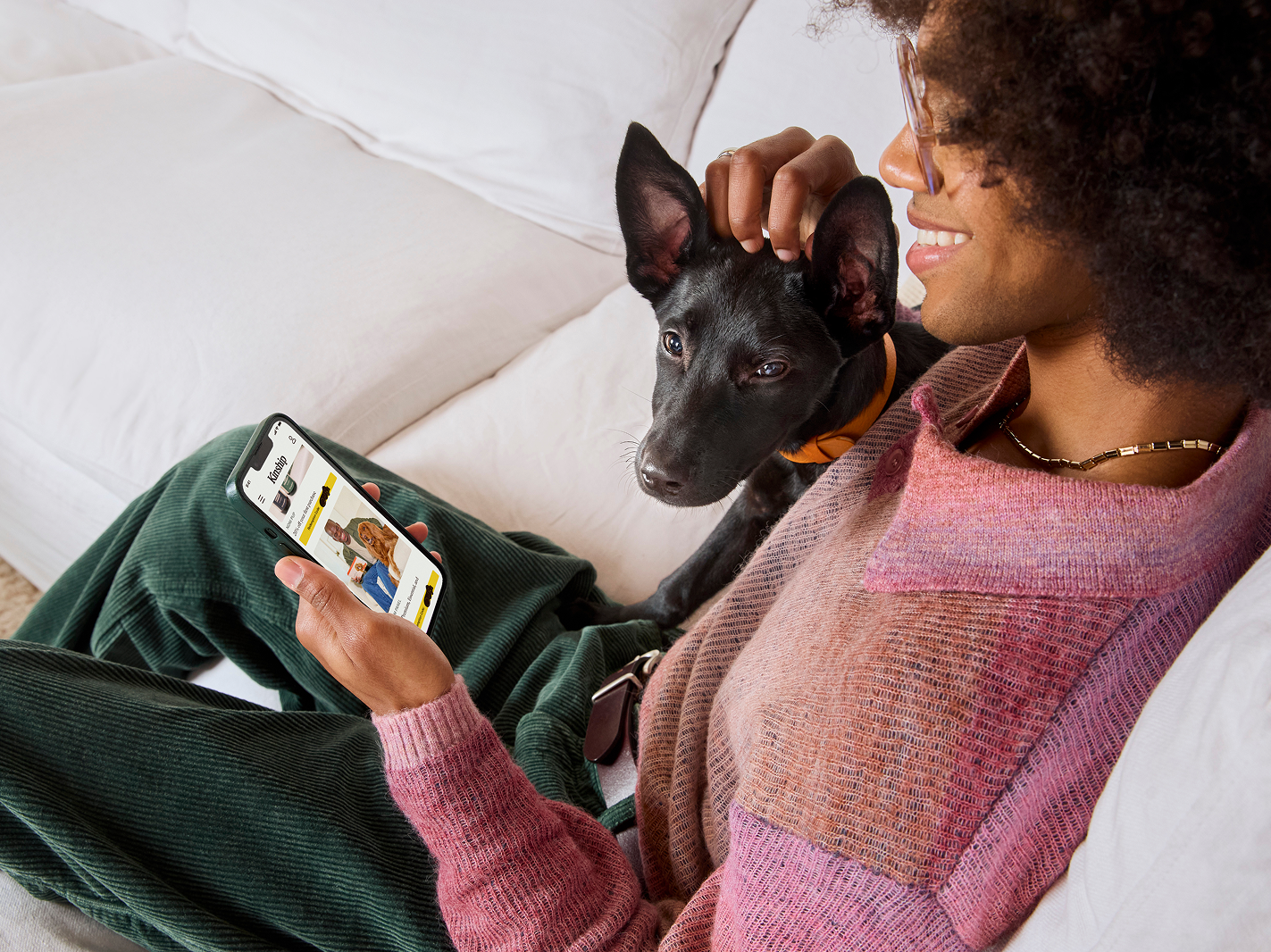
Get (totally free) deals for food, treats, accessories, tech and way more pet parenting must-haves.
*Here at Kinship we love all cats so we wouldn't be doing our bit if we didn't take this opportunity to pipe up and say that if you are considering getting a cat, shelters are overflowing with heartbreakingly gorgeous moggies who would love a good home and a warm lap. PSA over.
Do Savannah and Bengal cats make good house pets?
Savannah and Bengal cats can make good house pets, but they’re not for everyone. There’s a big difference between later generation hybrids (which are generally considered to be fully domestic cats from the fourth – F4 generation onwards – and early generation F1, F2, and F3s). These earlier generation hybrids are more closely connected to their wild ancestors and, as a result, tend to exhibit ‘wilder’ traits, including a high prey drive, increased territorial behaviour, and possible inter-cat and human-directed aggression.
Key differences between Savannah and Bengal cats
Origin and history
Savannah cat origin
The Savannah cat is a relatively new breed, developed in the 1980s in the USA by Judee Frank, who crossed an African Serval with a domestic Siamese, producing an F1 hybrid. Further development took place during the 1990s, but the breed wasn’t officially recognised by The International Cat Association (TICA) until 2021.
Bengal cat origin
Records from the English Cat Fancy suggest that breeders were experimenting with the hybridisation of ‘spotted jungle cats’ (likely Asian leopard cats) and domestic cats in the 19th century, but the Bengal cat breed officially originated in the 1960s in the USA, when Jean Mill crossed a female Asian leopard cat with a black, shorthaired domestic tomcat to create the first (F1) generation. F1 hybrids were subsequently crossed with other domestic breeds, including Abyssinians, Egyptian Maus and Ocicats.
Physical characteristics
Savannah cat physical characteristics
The Savannah is a long-bodied, lean and elegant cat with a graceful neck, long legs, and a medium-length tail which tapers to a blunt tip. Their size and weight can vary widely depending on generation and sex. F3 females weigh on average 5.4kg, F3 males average around 7kg. Savannahs have triangle-shaped faces with a tapered muzzle and a wide-bridged nose with slightly convex nose leather. Their ears are large, tall, and set high on the head. Their eyes have a distinctive boomerang shape and are set beneath hooded brows. They have distinctive solid spotted coats on a background of any shade of brown (black), spotted tabby, silver spotted tabby, black or black smoke. Eye-like ocelli marks on the backs of the ears are desirable.
Bengal cat physical characteristics
The Bengal is a large, sleek, muscular cat with powerful hindquarters that are slightly taller than its shoulders and a thick tail with a rounded tip. Bengals range in height from 33–40cm. Females tend to weigh between 3.6 and 4.5kg. Males are generally larger, weighing between 4–6.8kg. They have a broad, rounded head slightly longer than it is wide, a strong, full muzzle with a rounded chin, puffed nose leather, and pronounced whisker pads due to their widely spaced canine teeth. Their ears are short with rounded tips, and their eyes are large and almost round. Though strictly speaking, there are only three basic breed-accepted coat colours – brown, silver and snow (official colour names: ‘seal lynx’, ‘seal sepia’ and ‘seal mink point’), within each colour category, there are two accepted patterns, spotted and marbled, creating a myriad of combinations. Some Bengals have a unique shimmering ‘glitter’ coat, which is caused by a mutation in the FGFR2 gene, which causes the hair shafts to reflect and refract light.
Temperament and behaviour
Savannah cat traits
Savannah cats are bold, intelligent and confident. They look like miniature wild cats and often act the part. They can form strong bonds with their humans but tend to be more independent than other breeds, preferring to interact through play and positive reinforcement training rather than cuddly lap cats. High generation F1 to F3 cats can be aloof and wary of strangers, emotionally reactive, unpredictable in unfamiliar situations, and may not tolerate being handled, so they’re not recommended as pets. By the fourth generation, most of the wild Serval traits have been dialled down, so these cats are generally less skittish, more social, and adaptable to living in a domestic home environment. They are extremely keen and adept hunters, frequently targeting wildlifeopens in new tab, so it’s vital to provide them plenty of opportunities to engage in interactive predatory play with a wand toy.
Bengal cat traits
Reputable breeders breed Bengal to Bengal to minimise the wild traits and behavioural issues, which are still found in early-generation hybrids (F1–F3). Early generation cats are often timid, fearful, most active at night and find it hard to cope with a domestic home environment. Later generations tend to have stable temperaments and be sociable, affectionate, curious and trainable, though they can be vocal, demanding and still display more predatory behaviouropens in new tab than the average domestic cat. They love interactive games and food puzzles, and are often fascinated by water, playing in sinks or attempting to join their pet parents in the bath or shower. If their needs aren’t met, Bengals can be more prone to display problem behavioursopens in new tab like spraying, house soiling and aggression than other breeds. They also have a reputation for displaying despotic behaviour, terrorising and attacking other cats in the neighbourhood to maintain control over resources such as food, prime hunting or resting places, and even going so far as to break into other cats’ houses in an attempt to intimidate the residents and expand their territory.
Care and maintenance
Savannah cat maintenance
Savannah cats are low-maintenance in terms of grooming. Brushing once or twice a week is enough to maintain their short, sleek coats and prevent shedding. But they’re high maintenance when it comes to attention, demanding daily interaction, play and mental stimulation. Without it, they’ll find their own entertainment (usually at your expense, so lock away your precious ornaments). Regular vet checks and quality high-protein food are also essential.
Bengal cat maintenance
Bengal cats are low-shedding, so a quick brush once a week will keep them in tip-top condition. But grooming is the easy part. Like Savannahs, they are highly visual cats, drawn to movement, contrast and light, so they need plenty of mental and physical stimulation, including interactive play, food puzzles and climbing trees. As Bengals are very social and thrive on engagement, they also benefit from having human company during the day.
Ideal environment
To meet the requirements of the Dangerous Wild Animals (DWA) licenceopens in new tab, which is required to keep the first generations of both breeds in the UK, you need a large, secure outdoor enclosure with climbing frames and a heated indoor sleeping area. Lower generations can legally live in the house.
Savannah cat ideal living environment
To thrive, Savannahs need a spacious, stimulating environment with plenty of room to explore, leap, and climb – these guys can leap eight feet! Think: multiple floor-to-ceiling cat trees, wall shelving and access to a secure garden or catio, so they can roam in safety.
Bengal cat ideal living environment
Bengals do best in spacious, stimulating homes that offer opportunities for exercise and mental enrichment, so they can stay active. They also benefit from outdoor access to prevent them from becoming bored, restless and resorting to attention-seeking antics like excessive meowing and scratching or destructive behaviour.
Exercise
Savannah cat exercise needs
Savannah cats have boundless energy and require much more physical stimulation than the average domestic cat - ideally, an hour or two of interactive play a day. They love to run (some enjoy exercise wheels, though they can be overstimulating for some cats), and like their Serval ancestors, they are elite athletes when it comes to jumping, with most able to leap eight feet or more into the air, so they need lots of vertical space. If they don’t get enough exercise, they can become bored, frustrated and destructive.
Bengal cat exercise needs
Bengal cats are also very active and have high energy levels. They need at least 30 minutes of interactive play split into two or three sessions, so they are best suited to pet parents with an active lifestyle and enough time to engage with them. They’re expert climbers and can jump three times their own height, so they need floor-to-ceiling cat trees and plenty of wall perches or cleared tops of furniture to enable them to stay happy and healthy.
Cost of ownership
Savannah cat cost
The cost os a Savannah varies widely, from £250 for a lower generation cat to upwards of £20,000 for an F1. The price also depends on whether they are being sold as a pet or to breed from.
Bengal cat cost
Bengals can be purchased from £50 without a pedigree, but for registered cats, expect to pay between £250 and £1,500, though breeding cats with rare coat patterns can sell for upwards of £3,500. Bengals can also be adopted from rescue centres, and the Bengal Cat Association and the Bengal Cat Club both have rehoming programmes.
Laws and regulations
Savannah cat regulations
F1 Savannahs are restricted under the Dangerous Wild Animals Act 1976. To keep one legally, you must apply for a licence from your local council. F2 and later generations are classified as domestic cats, so don’t require a licence.
Bengal cat regulations
F1 Bengals also require a Dangerous Wild Animals (DWA) licence, but there are no legal restrictions for the F2 generation onwards.
Lifespan and health
Savannah cat health
Savannah cats typically live between 12 and 20 years. Early generations may have shorter lifespans due to their high percentage of wild genes. They can be prone to certain genetic conditions, including histiocytoid cardiomyopathy, erythrocyte pyruvate kinase deficiency (an inherited haemolytic anaemia resulting in lethargy, weakness, weight loss, jaundice, and abdominal enlargement), and fibrodysplasia ossificans.
Bengal cat health
Bengal cats typically live between 10 and 16 years, with some living into their twenties. They are generally considered to be a healthy breed but can be prone to certain genetic conditions, including hypertrophic cardiomyopathy (HCM), progressive retinal atrophy (PRA), hereditary cataracts, polyneuropathies, and increased incidence of thoracic wall deformities in related Bengals.
Is a Savannah cat or Bengal cat right for you?
A Savannah or Bengal can be a rewarding companion if you’re prepared to meet their unique breed and generational requirements. Consider your experience, lifestyle, and local regulations - if you’re after a low-effort pet, a hybrid breed (even a later generation) isn’t going to be a good fit for you.
Because of their specialised needs, breeding wild cats or early-generation hybrids with domestic cats raises significant animal welfare concerns. In line with other countries, DEFRA has recently recommended introducing legislationopens in new tab to ban any further breeding of domestic cats with any non-domestic felid species, or breeding with F1 or F2 hybrids, and the importation of any domestic wild cat hybrids with the exception of later generation (F5 onward) Bengal cats.
Bottom line: Savannah cats versus Bengal cats
Bengals and Savannahs are both alluring, energetic, intelligent breeds, but they differ in looks, temperament and care requirements. Bengals are one of the most popular cat breeds in the UK, and with their social nature and dog-like energy and loyalty, they are a lively choice for most households. Savannahs are rapidly gaining in popularity, appealing to people seeking a wilder-looking cat, but are best suited to experienced cat parents capable of coping with a more challenging companion.
Savannah versus Bengal cats: frequently asked questions
Which breed is more exotic in appearance, the Bengal or the Savannah?
Both Bengals and Savannahs have a striking, exotic appearance. Early generation Savannah cats have a very similar appearance to their Serval relatives, while later generations are often likened to miniature Cheetahs. Bengals with large, random, two-toned rosetted markings are considered particularly desirable, as they resemble little leopards or jaguars.
Are Bengal and Savannah cats good with children and other pets?
Like children, Bengals and Savannahs are inquisitive, playful and high-energy, so they may seem like a perfect match. However, they are strong, active cats and can be territorial, so they are best suited to older children and teenagers who understand how to interpret their body language, respect their boundaries and interact with them on their terms. Both breeds pose a risk to small pets like rodents, rabbits, guinea pigs, birds and fish, which they’ll likely view as prey. But, if carefully introduced, they often view dogs as playmates.
What kind of environment do Bengal and Savannah cats need?
Neither Bengals nor Savannahs are the kind of cats who’ll be happy snoozing on the sofa all day. Both breeds are intelligent, athletic, wired for action and are known for their intense focus and sharp senses – sometimes fixating on things we can’t see. They need space, indoor enrichment, and ideally some form of outdoor access, such as an enclosed garden or catio, to enable them to engage in innate behaviours, including exploring, climbing, scratching and stalking prey.
What cat is bigger than a Savannah cat?
Though Savannah cats are the tallest breed, with the record holding male – an F1 called Arcturus – measuring 19.05 inches from shoulder to toes, Maine Coon cats are considered the largest breed in terms of overall size and weight. Arcturus is also the heaviest Savannah on record, weighing 30 pounds, but the heaviest Maine Coon on record – a male named Ludo – tipped the scales at a hefty 34 pounds. Another Maine Coon, Stewie, also holds the Guinness World Record for the longest domestic cat, measuring 48.5 inches from nose to tail.
References
“Bengal - TICA - the International Cat Association.opens in new tab” TICA - the International Cat Association, 29 Oct. 2024.
“Catsopens in new tab.” Guinness World Records, 2015. Accessed 1 June 2025.
Dickman, Christopher R., et al. “Assessing Risks to Wildlife from Free-Roaming Hybrid Cats: The Proposed Introduction of Pet Savannah Cats to Australia as a Case Study.opens in new tab” Animals, vol. 9, no. 10, Oct. 2019, p. 795.
GOV.UK. “The Dangerous Wild Animals Act 1976opens in new tab (Modification) (No.2) Order 2007.” Legislation.gov.uk, 2011.
Millsopp, Sarah, et al. Association of Pet Behaviour Counsellors Annual Review of Casesopens in new tab 2012 APBC Acknowledgements. 2014.
“Opinion on the Welfare Implications of Current and Emergent Feline Breeding Practicesopens in new tab.” GOV.UK, 2024.
“Savannah - TICA - the International Cat Association.opens in new tab” TICA - the International Cat Association, 25 Sept. 2024, .
“Savannah Cat Size.opens in new tab” Savannah Cat Association.
“The Cat Group Position Statement on Hybrid Catsopens in new tab.” Icatcare.org, 2025. Accessed 27 May 2025.
Wilhelmy, Jacqueline, et al. “Behavioral Associations with Breed, Coat Type, and Eye Color in Single-Breed Catsopens in new tab.” Journal of Veterinary Behavior, vol. 13, May 2016, pp. 80–87.

Claire Stares, BA (Hons), MA, PG Dip Clinical Animal Behaviour
Claire Stares is a feline behaviourist with a PG Diploma in Clinical Animal Behaviour from the University of Edinburgh Royal (Dick) School of Veterinary Studies. She’s dedicated to helping guardians and their cats overcome behavioural problems and thrive so that they can enjoy life together. A cat lady since babyhood (her first word was cat!), she has over 20 years of experience living and working with cats in homes, rescue environments and veterinary practices. A passionate advocate for training cats for enrichment and cooperative care, she practices what she preaches with her five cats: three rescued Domestic Shorthairs, Bimble, Bertie and Katie, a Siamese called Daisy Mae, and a Maine Coon named Horatio. When there isn’t a feline companion asleep on her laptop, she writes books and articles for various publications.
Related articles
![hailey bieber wears a red hat and holds two savannah cats]()
Wild Thing: Everything You Need to Know About Savannah Cats
Yes, they’re the supermodel of the cat world, but do they belong in your house?
![a picture of a bengal cat]()
Are Bengal Cats Legal In the UK?
Learn about why this beautiful cat is considered contraversial by some
![Dark-haired woman holding her ragdoll cat]()
7 Purebred Cat Breeds Likely to Suffer from Genetic Disorders
And why this means adopting a cat from a rescue centre could be a better choice
How High Can Cats Jump?
Seriously, your kitty’s a little Olympian
![Cornish Rex cat laying down on a pillow]()
The Cat Breed-Behaviour Connection
Which cats are more likely to have stranger danger? Bite the hand that feeds them? Get the zoomies? Scientists studied 5,700 pet cats and discovered some interesting traits


